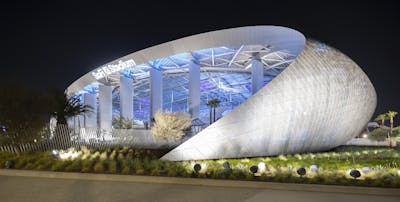
The following article appeared on the Civil+Structural Engineer website.
Overview
A major topic of discussion in the AEC industry is the potential of older, existing structures. Rather than accruing environmental debt through the demolition of such buildings, many firms are instead finding ways to repurpose them to serve the needs of a modern population. One such project is The Ion in Houston, Texas. The existing structure, which was not designed to accommodate expansion, was built in 1939 as a department store and was most recently occupied by Sears. In 2017, Rice Management Company bought out the remainder of Sears’ 99-year ground lease and began plans to renovate the space as a landmark for the coming Ion District.
Rice Management Company, who serve as stewards of the Rice University Endowment, recognized the declining interest in the building as a retail space and sought to transform it into a collaborative technology innovation hub for Houston’s entrepreneurial, corporate, and academic communities. Because the original structure was not designed for expansion, the plan to add an additional two stories of steel framing as well as horizontal expansions proved to be a difficult task. To help with this task, Rice Management Company enlisted the services of Walter P Moore as a structural engineer for the project.
Rice Management Company also tapped a number of other firms to help complete this project. Three architectural firms worked on the Ion project: SHoP Architects, James Carpenter Design Associates, and Gensler. Hines served as the development manager for the Rice Management Company, and Gilbane was the general contractor.
One of the biggest challenges facing these teams was compensating for the added load of two additional floors. While the plan was to expand the building vertically, it was clear that the existing roof on the building lacked strength to serve as a new floor. To give the roof the needed load capacity, it was overbuilt with new steel framing that spans from column to column. The project’s foundations were also strengthened to support the weight of the vertical expansion. To support this weight, the structure’s existing spread footings were thickened to increase their flexural capacity.
In addition to the added weight of two floors, the building’s vertical expansion also introduced a significant increase in wind load. This challenge was further compounded by openings cut in the exterior walls for added daylight, which previously served as the lateral system for the building. As such, a completely new lateral system had to be added to the building in the form of concrete shear walls through the existing structure. Rachel Calafell, Principal/Structures at Walter P Moore, is part of the team working on the project. According to Calafell, these shear walls had to be threaded through the structure by “coring holes through the existing slabs, doweling rebar through them, and pumping self-consolidating concrete through.”
Calafell describes the original structure as “a concrete box” with concrete columns, flat slab, and exterior walls. In addition, these concrete walls had very few openings to let in light due to previous use as a retail store. Despite the “concrete box” structural description, the original building was adorned with iconic corners on the northside and an art deco storefront.


